
Vientiane is a must-visit destination for those who are interested in Buddhist culture because it has so many temples, from the most famous to smaller ones hidden in quiet alleys. This article will recommend for you the top temples to explore in 2025, including both famous and lesser-known temples.
Constructed in 1566 during the rule of King Setthathirath, the stupa is shaped like an antique Asian-styled bottle of wine with gold overlaid exterior. Wat Pha That Luang was destroyed during the Thai invasion in the 19th century but has been completely restored.
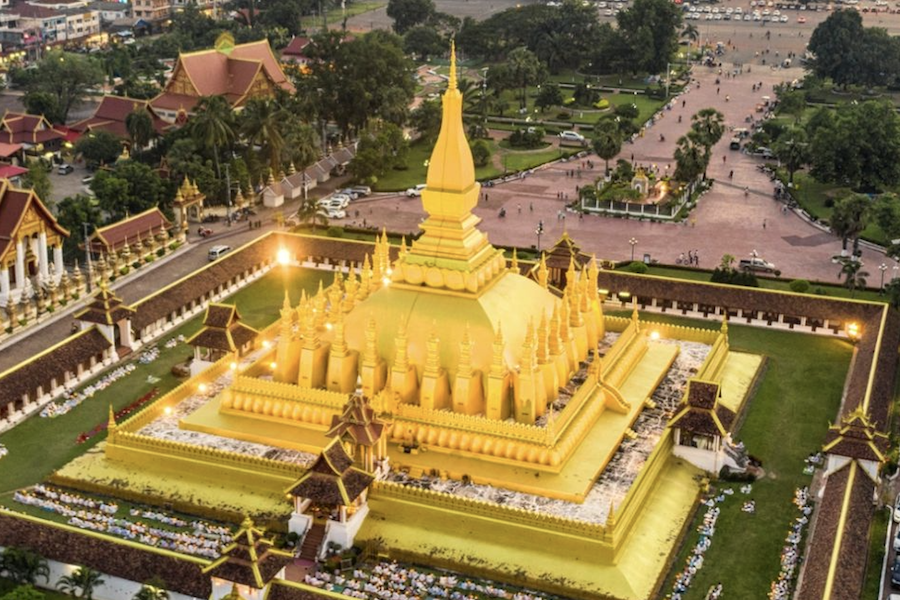
The giant golden stupa can catch your eyes from a far distance (Source: Internet)
The stupa's architecture reflects the cultural and national identity of Laos. It has become a national symbol, so you can easily find its images on the banknotes and national emblem of the Lao People's Democratic Republic.
Wandering around every corner of this wat, you can observe the sculpted elements that showcase ancient Lao creativity. The serene ambiance makes it a perfect place for meditation or just sitting and taking in the beauty of your surroundings.
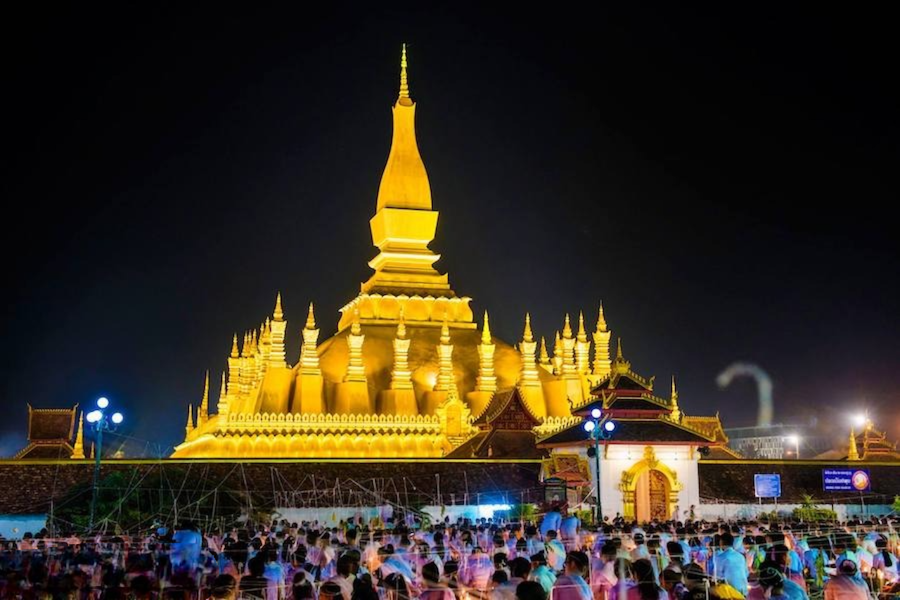
That Luang Festival attracts many locals and foreign travellers (Source: Internet)
Every November, there is the That Luang Festival which takes place for three days and three nights. There are some rituals in this festival including the bathing ceremony of the Buddha, food offerings, and blessings. Travelers visiting during this time can immerse in the festival's spiritual and cultural richness here.
Wat Si Muang was constructed in 1566 and is considered the most sacred temple in Vientiane. According to local legend, when Vientiane was founded, the King chose a site in Si Saket district to erect a pillar that symbolized the nation's sovereignty. However, during the ground-breaking ceremony, a subterranean spring was struck, leading to water leaking uncontrollably.
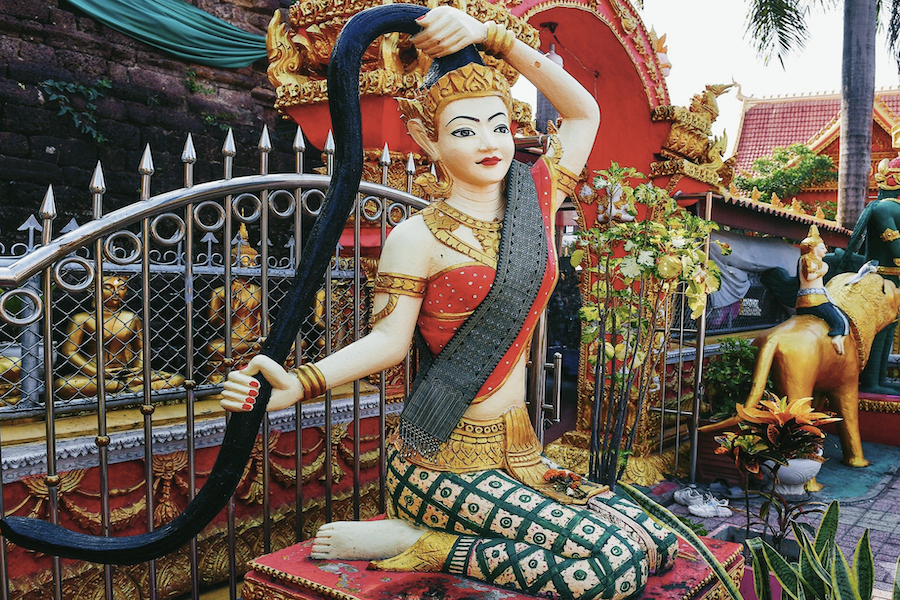
The statue of Mother Si (Source: Vietnamnet)
At that moment, a pregnant woman named Nang Si volunteered to sacrifice herself by jumped into the spring to seal the water. After more than 100 days, the spring sealed itself, and a pillar rose from the depths. Since then, this temple has been revered as a symbol of Mother Si, who sacrificed herself to protect the nation.
The temple has a main prayer hall dedicated to the Buddha and a shrine honoring Mother Si Muong. The temple grounds are adorned with numerous Buddha statues, most notably the statue of the Buddha Shakyamuni seated beneath a bodhi tree. The temple's architecture and decorations are incredibly intricate and detailed. At the main entrance, visitors can see many pictures and murals that illustrate the legends of Mother Si and the Buddha.
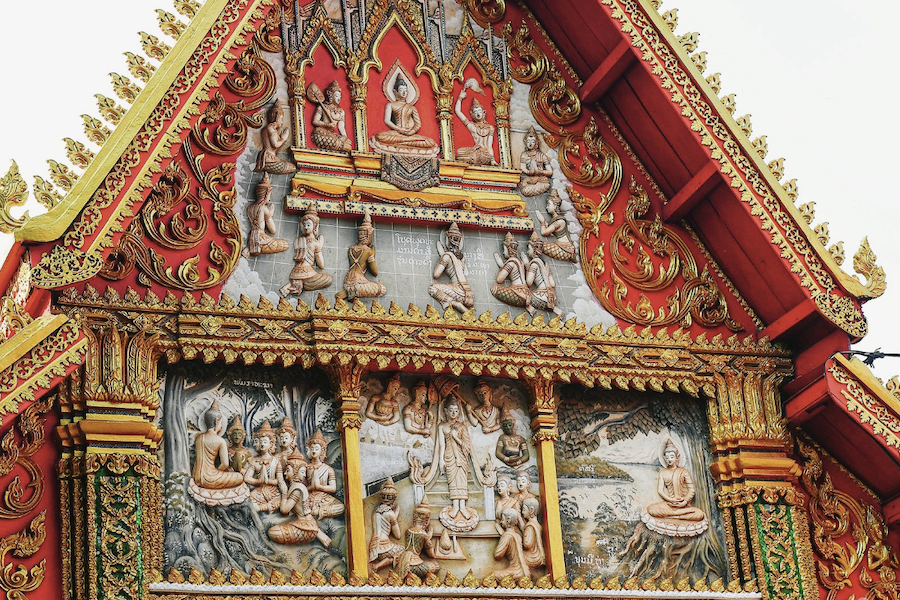
On the main sanctuary's entrance, visitors can observe reliefs illustrating the legend of Mother Si Muang and the Buddha (Source: Vietnamnet)
Today, Wat Si Muang is considered the soul of the city and a place where people often come to pray for peace and good fortune.
You may also like: Vientiane Tour 3 Days: Explore the Sacred Land
Another place that is worth seeing is Wat Inpeng, a secluded temple that contains beautiful Lao architecture. The temple has been retained in good condition and still has considerable importance. It contains a large Buddha that many people searching for peace and blessings frequent.
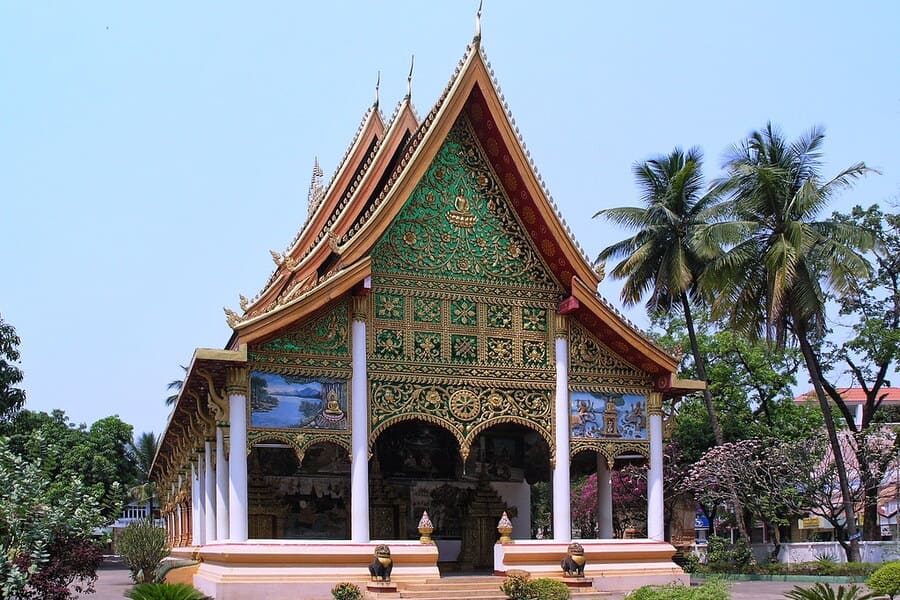
The outside view of Wat Inpeng (Source: Internet)
The center of Wat Inpeng is the prayer hall, which is the biggest building in such a monastery which boasts of a beautiful gable roof, carved wooden doors, and an ornate facade. The inside walls have been plastered and decorated with mythical figures and some Buddhist symbols. There are also small chapels, stupas, and meditation rooms that have their own architectural styles located around the hall.
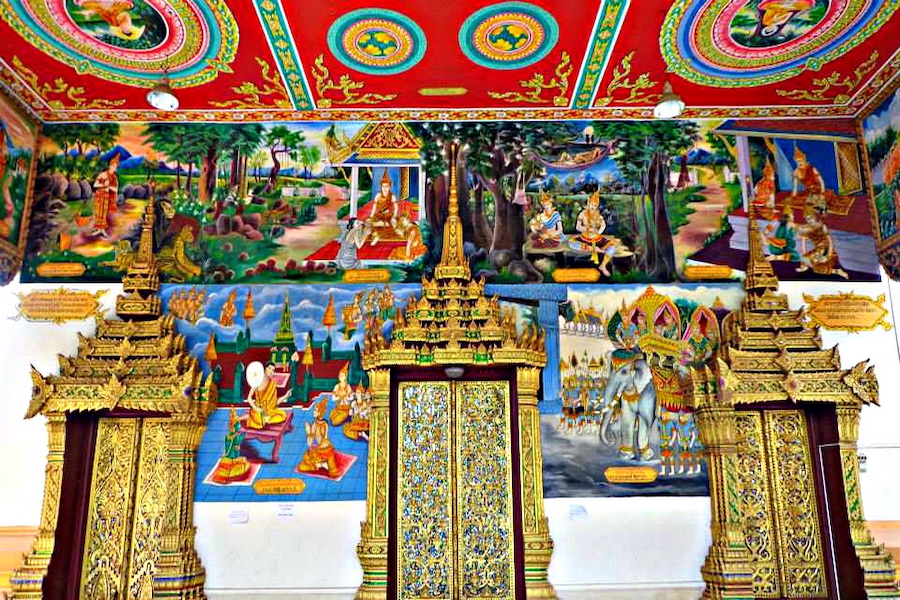
Murals in very bright colors depict several Buddhist scenes including the Buddha teaching a number of followers, the Buddha subduing the elephant Nalagiri and a reclining Buddha (Source: Internet)
Wandering around this hidden temple, you will notice the sculptural details that reflect a blend of Lao, Thai and Khmer artistry. The serene ambiance makes this a welcoming area for meditation or just taking in the splendor of your surroundings.
Wat Phathat Si Khottabong is a hidden gem in the center of Vientiane. This tranquil temple provides a calming escape from the chaos and noise of the city. Constructed in the 16th century, this wat displays classic Lao architecture with beautiful details that are incredibly engaging.
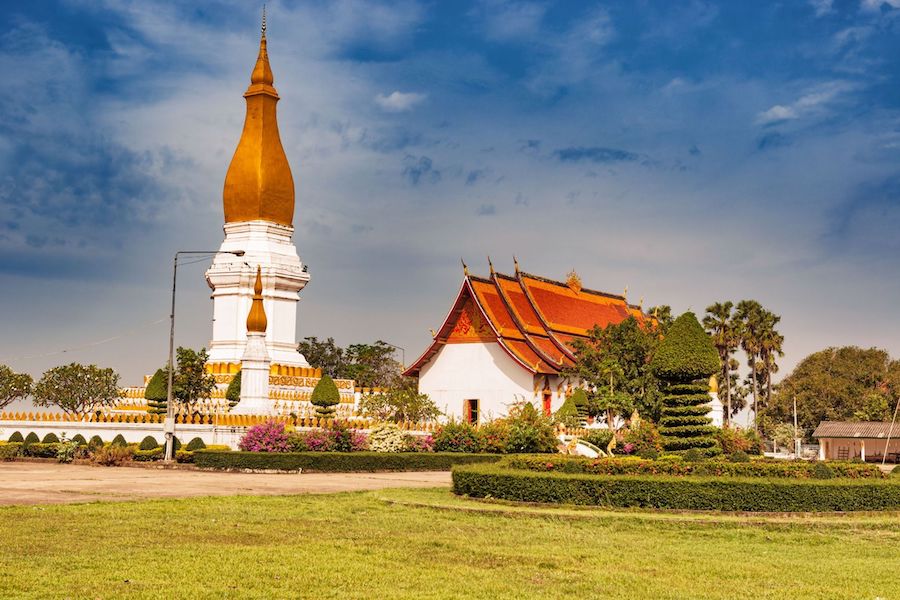
Wat Sikhotabong has an outstanding golden stupa (Source: Internet)
While at Wat Sikhotabong, you should pause for a bit and appreciate the marvelous golden stupa and exquisite Buddha statues. The temple area is surrounded by vibrant foliage, making it perfect for a peaceful walk. Tourists who have been here often review that their favorite thing about this destination is its lower crowd levels, which fosters a more personal connection to the sacred spirits.
This is another lowkey yet worth-visiting temple in Vientiane. The temple’s elaborate artwork on the walls portrays different facets of Lao culture and Buddhist teachings, making it a perfect place for anyone interested in history.
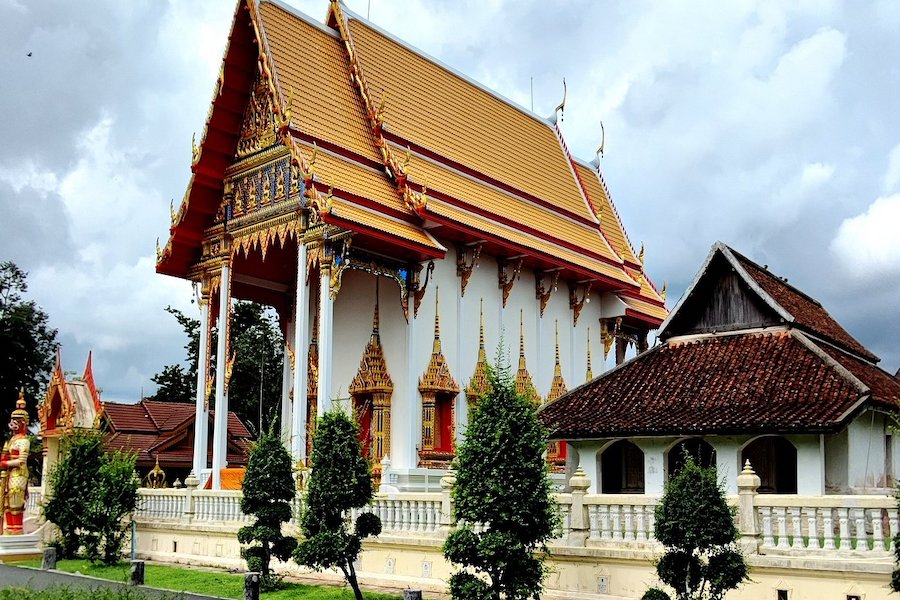
The gentle sounds of nature in this area enchant many visitors (Source: Internet)
The site boasts an impressive collection of ancient Khmer sculptures, including intricately designed lintels and sandstone door frames. There is the Mueang Phaniat archaeological site nearby, which showcases the remnants of a significant Khmer religious sanctuary and moats that used to mark the town's southern limit in the past. The ancient settlement has been estimated to exist during the 12th to 16th centuries. This wat is the ideal space for meditation and relaxation because of the serene atmosphere here.
Wat Sisaket is the oldest temple in Vientiane, initially constructed by King Phothisarath in 1551 and later rebuilt by King Anouvong in 1818. Its architecture bears a strong resemblance to Thai design, notably featuring a five-tiered roof that differs it from other Laotian temples.
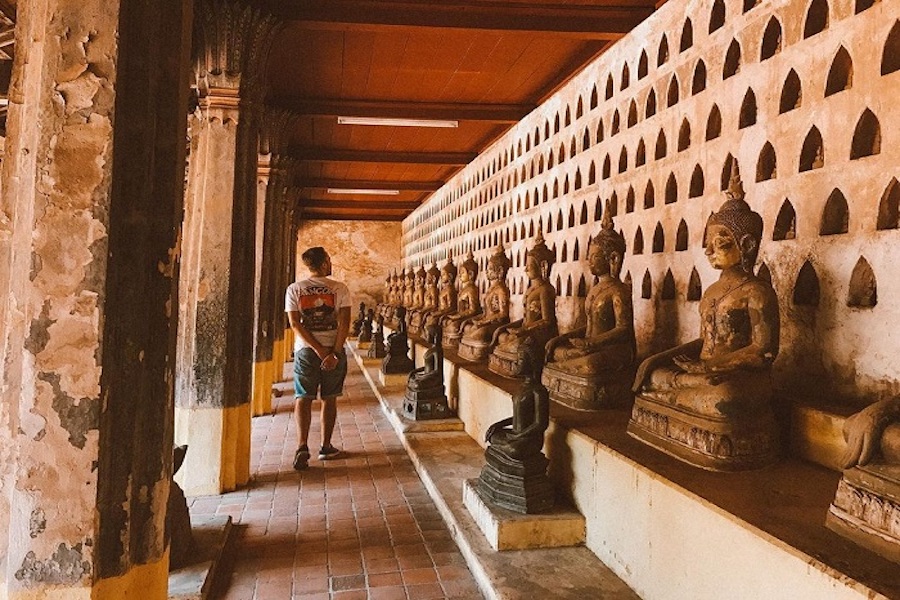
There are Buddha statues in every corner of the wat (Source: Internet)
This temple is renowned for its huge collection of Buddha statues. Wat Sisaket is home to 6,840 statues of various sizes which are primarily made of bronze. The inner walls of the colonnade display over 2,000 Buddha statues dating back to the 16th to 19th centuries. The western colonnade showcases a series of damaged statues from the Siamese attack in 1828.
When visiting Sisaket, you must explore the “Buddha statue warehouse” on the left side of the temple. Behind simple wooden doors, hundreds of Buddha statues of various sizes are on display. Some of them are headless, others missing limbs, and some are reduced to mere bases. But they all share one thing in common: all the statues are headless.
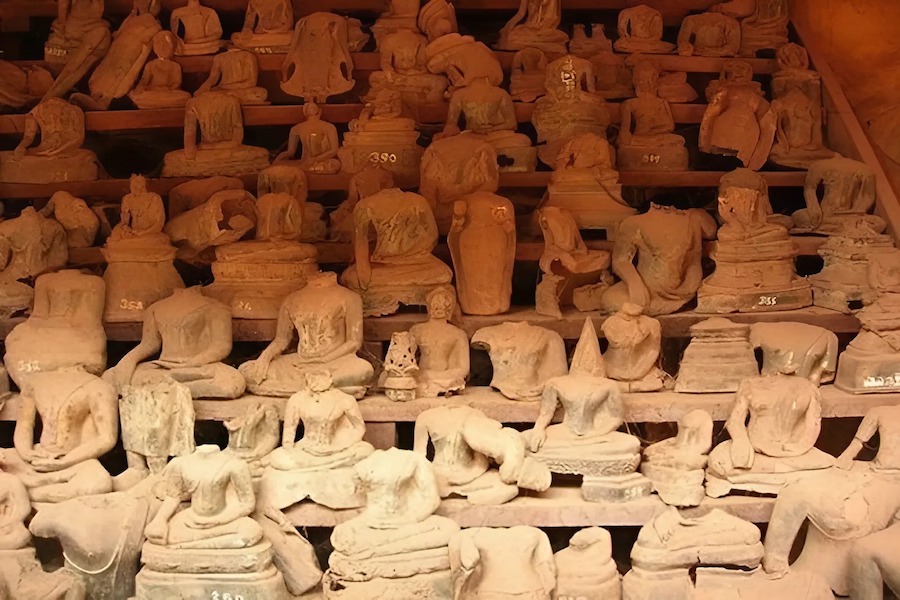
The mysterious headless statues in Wat Sisaket (Source: Internet)
The temple also serves as a museum, housing over 8,000 valuable books and 6,840 Buddha statues made from materials such as bronze, stone, wood, silver, and plaster.
This is another hidden temple in Vientiane that deserves a visit. Coming here, visitors are instantly struck by its exquisite wood carvings and a large bronze Buddha statue dating back to the 16th century. Though ravaged by the Siamese in 1828, it has been meticulously restored.
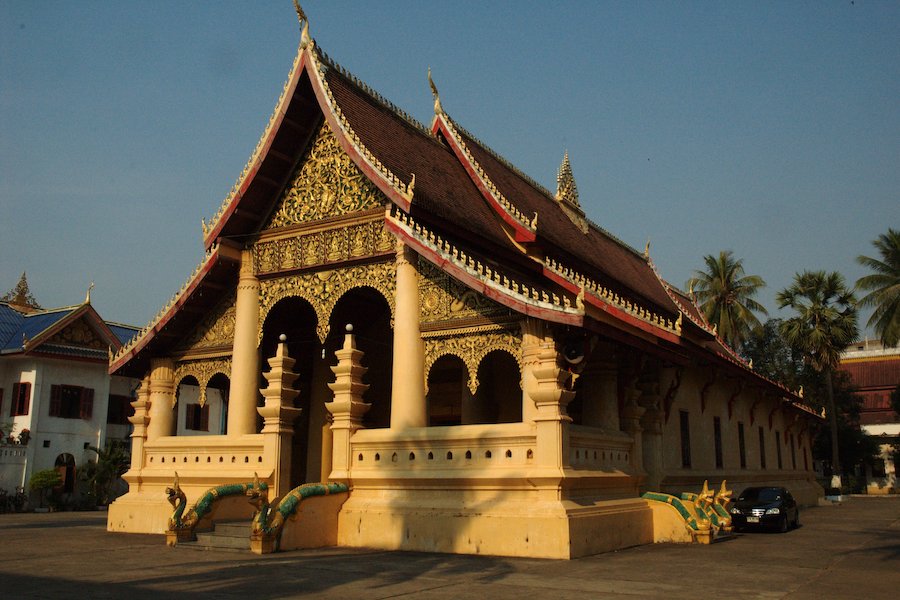
The view from outside of Wat Chanthabuli (Source: Internet)
The temple provides various spots for meditation. If you’re lucky, you might witness a traditional ceremony, adding even more authenticity to your visit.
This temple might be the most lowkey one on the list. It is rarely visited because it’s located in the middle of a jungle. It was once a monastery and a place of worship, but since it was abandoned, it has transformed into a mysterious place where spiritual buildings and jungle combine.
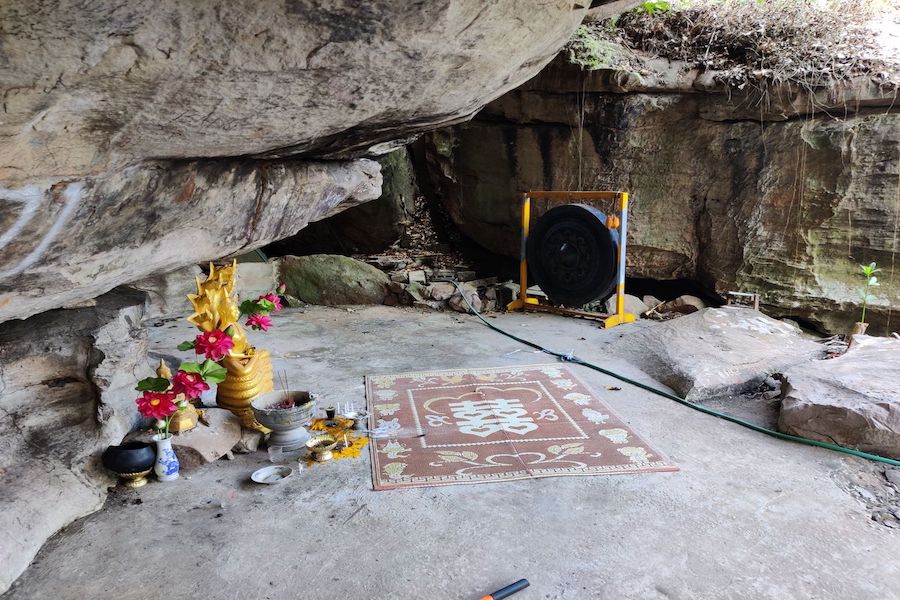
The temple itself is modest, but the true reward is the adventure of navigating through the forest to get here (Source: Atlats Obscura)
To reach this temple, you'll need to hike or bike along a dirt path through the forest. The journey might be a bit tiring and time-consuming, but you'll be rewarded with stunning views of the forest and its lush greenery, and you can even take a break to admire the waterfall.
Besides visiting famous landmarks, exploring lesser-known temples can also spice up your trip and make it more memorable. We hope this article has been helpful to you, and don’t hesitate to contact Asia King Travel to plan your Lao adventure!
Recommend for you: Vientiane Tour 2 Days: Cultural Highlights & Buddha Park Exploration